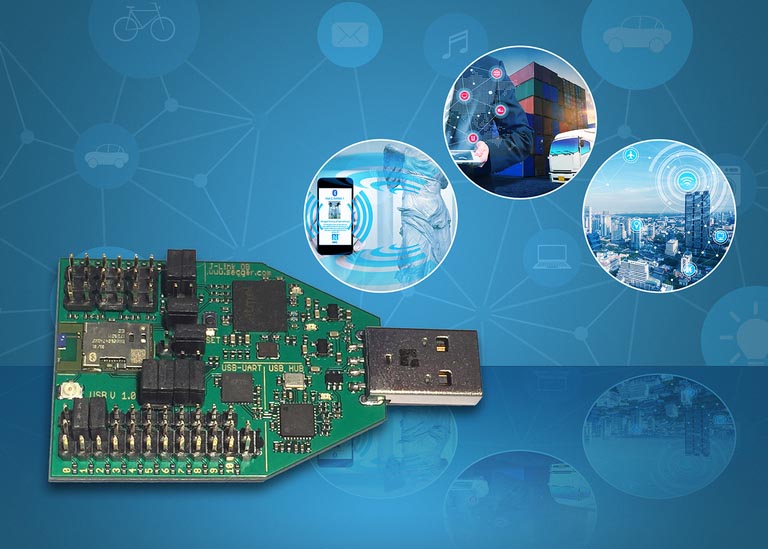Small USB-based device simplifies and speeds up development
Toshiba Electronics Europe has announced a new USB-based Bluetooth® development platform based around their innovative and advanced TC35678 BT 4.2 single-chip Bluetooth® Low Energy (LE) controller. The BMSKUSBBT1760A(P) USB board reduces development time and cost as it provides all that is needed to develop advanced Bluetooth LE applications in a single, easy-to-use platform.

Upon plugging the device into a USB port for the first time, the USB driver is automatically detected by the Microsoft operating system. The device can be used through the USB hub as a target platform within an Integrated Development Environment (IDE) (e.g. IAR®) controlled by the on-board USB J-LINK connected to the on-chip single-wire-debug (SWD) interface. A Toshiba software tool (EasyStandAlone) allows programming of the embedded flash memory from the PC side.
Alternatively, a Graphical User Interface (GUI) PC application allows access to the Bluetooth LSI via the on-board FTDI-UART connection for host mode applications running on the PC. In both cases, the USB stick works with Toshiba´s SDK (software development kit) that can be downloaded from the supplier’s developers website.
At the heart of the system is Toshiba’s TC35678FSG Bluetooth LE controller embedded within a PAN1760A module from Panasonic that achieves class-leading low current consumption and incorporates 256 kB of built-in Flash ROM to store user programs and data for stand-alone operations.
The system is powered by the USB port and is easily and quickly configured via a series of simple jumpers. These jumpers also allow users to apply external control of the system reset or to apply external power via a battery source to give designers complete flexibility. All of the GPIO lines from the TC35678 are available on headers/jumpers allowing designers to design and debug sophisticated interface structures.
The board can be configured to be used in either host or standalone mode (no external host used in standalone mode) by setting GPIO lines during a reset operation. Also, each of the three power modes (Sleep, Backup and Deep Sleep) are available and GPIO lines can be used for waking the system.
The device is intended for use as a development platform and is also usable for quickly setting up prototypes. It provides a quick and simple means for rapid and affordable application development.
Notes:
*All company names, product names, and service names mentioned herein may be trademarks of their respective companies.